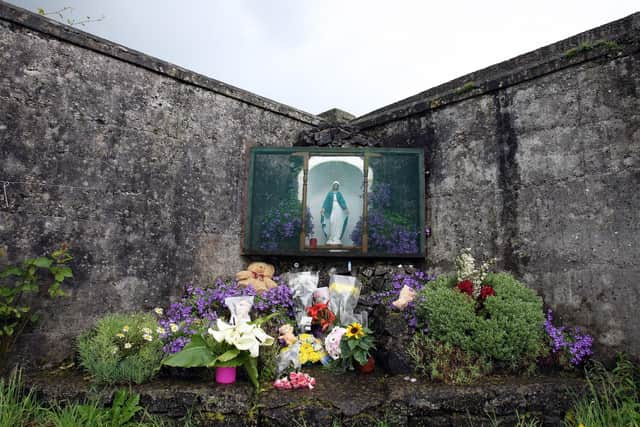Mother and baby report reveals 'appalling' scandal of 9,000 child deaths
The major causes of death were respiratory infections and gastroenteritis, an independent commission which investigated the “appalling” toll said.
It added: “The absence of professional staff, combined with what must be acknowledged as a general indifference to the fate of the children who were born in mother and baby homes, contributed to the appalling levels of infant mortality.”
Advertisement
Hide AdAdvertisement
Hide AdThe institutions were established for unmarried women and their mothers at a time when society looked down on them.


The proportion of women admitted to such homes in Ireland was probably the highest in the world in the 20th century.
They were run by religious institutions and overseen by the Government.
Women were admitted after they had babies while unwed.
The Commission of Investigation Into Mother and Baby Homes’ report said: “The high rate of infant mortality (first year of life) in Irish mother and baby homes is probably the most disquieting feature of these institutions.
“It is particularly disquieting that the high mortality rate was known to the authorities both local and national and was even described in public reports.
“About 9,000 children died in the institutions under investigation – approximately 15% of all the children who were in the institutions.”
In one year, 1943, 75% of the children who were born or who were admitted to the Bessborough home in Cork died.
The commission said that before 1960, the homes did not save the lives of “illegitimate” children (as they were legally termed then), that children were more likely to die in the institutions than outside them.
Advertisement
Hide AdAdvertisement
Hide AdReviewers said Ireland was a cold harsh environment for many, probably the majority, of residents during the earlier half of the period under consideration.
The report said: “It was especially cold and harsh for women. All women suffered serious discrimination.
“Women who gave birth outside marriage were subject to particularly harsh treatment.”
Taoiseach Micheal Martin acknowledged it was a time of societal and church pressure on unmarried mothers dating back decades.
Some pregnancies were the result of rape; some women had mental health problems, some had an intellectual disability, the Government-ordered review said.
Overcrowding probably contributed to excess mortality, the investigation found.
Women were admitted to mother and baby homes and county homes because they failed to secure the support of their family and the father of their child, the report noted.
The commission said they had no other option but to enter the institutions.
Advertisement
Hide AdAdvertisement
Hide Ad“Their lives were blighted by pregnancy outside marriage, and the responses of the father of their child, their immediate families and the wider community,” it added.
There were about 56,000 unmarried mothers and about 57,000 children in the mother and baby homes and local authority owned county homes investigated.
In 1921, some women ate their meals “squatting on the floor” with most heating by open fire.
The food “was often adulterated or unfit for consumption”.
In the early decades most women who were admitted were domestic servants or farm workers or they were carrying out unpaid domestic work in their family home.
In later years, however, many of the women were clerical workers, civil servants, professional women and schoolgirls or third-level students.
The commission said: “Many were destitute. Women who feared the consequences of their pregnancy becoming known to their family and neighbours entered mother and baby homes to protect their privacy.
“Some travelled to Britain, for the same reason.”
The commission made recommendations covering compensation to survivors, memorialisation and creating a central repository of the records of institutions and adoption societies so that information can be obtained from one place.